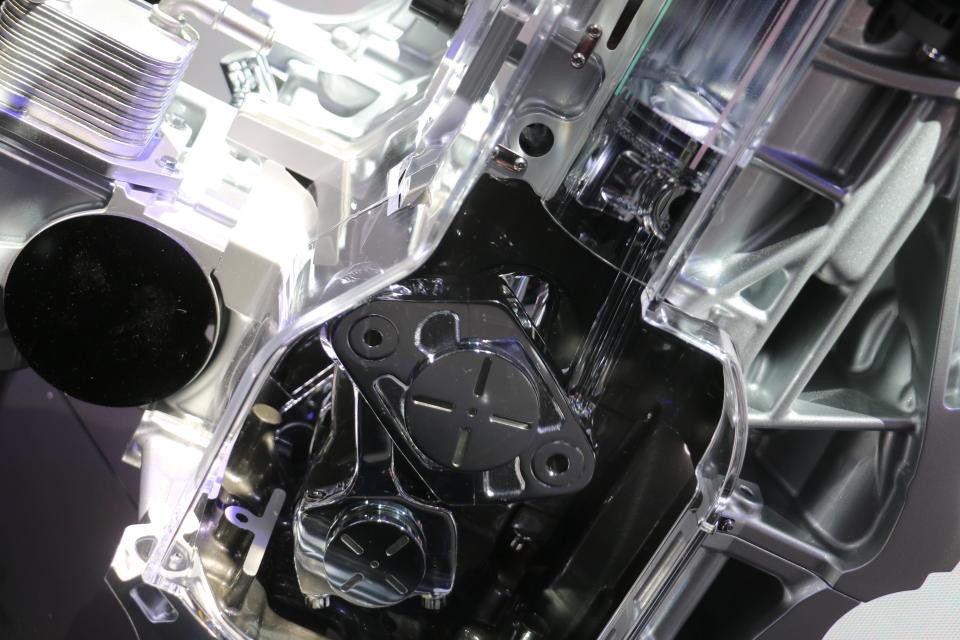Infiniti's Variable Compression Gasoline Engine Is Almost Brilliant

Since I didn't set up an interview with anybody at Infiniti, I wasn't supposed to learn much more about their revolutionary VC-T beyond what we already know. But then, I pretty much just stood there when they started to talk about it. What did I discover? The real revolution will have to wait.
Don't get me wrong, the world's first production-bound variable compression internal combustion engine is truly something. It's a four-valve 2.0-liter turbocharged four-cylinder that packs four multilink mechanisms inside its crankcase with three times the typical number of bearings, capable of providing any desired compression ratio between 8.0:1 and 14.0:1. It also has both port and direct fuel injection, individual cylinder ignition timing, variable intake- and exhaust-valve timing, and electronic boost control.
So, that's clever, right?
It certainly is. Harry Ricardo's idea of variable compression comes from the 1920s, and since then, many OEMs and private engineering companies have tried to put it into production-including Peugeot, Saab and Lotus with their Omnivore two-stroke. Nissan first gave it a go in 2003, only to settle for the current, non-hydraulic design in 2010. Almost 400 new patents later, the engine is ready for production.
What's the problem then?
There's no problem, really. If Nissan is right, this engine will be much smoother than any four-cylinder turbo thanks to the connecting rods remaining more upright throughout their stroke, with a torque curve very similar to what you'd see from a diesel. Therefore, Infiniti believes it's the perfect engine to replace its current lineup of V6s.

Sounds great!
Hang on, we don't know about the sound yet. What's for sure though is that the soundtrack provided by most direct injection 2.0 turbos is nothing to write home about.
Either way, what is really important to point out about the Infiniti VC-T is that it's not that powerful to begin with, and it won't be any more efficient than a diesel, which kind of defeats the whole purpose. Infiniti claims 268 horsepower and 288 lb.-ft. of torque, not bad from two liters, but the hard fact is this: Nissan chose this solution mostly because it's the only one they can produce in large quantities at a relatively low cost.
Nissan also went for variable compression over electrified drivetrains to keep costs down, which might be an effective way to do some downsizing, but will hardly be clean enough for the environmental demands of the next decade.
So, overall, this is a 7 of out 10?
About there, yeah. But a good seven can be very exciting sometimes.

You Might Also Like

